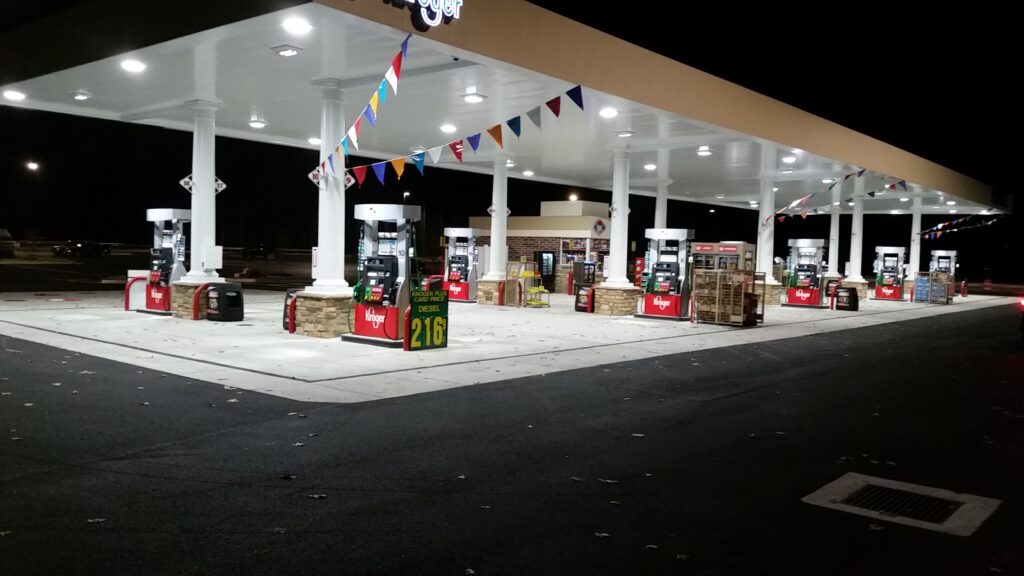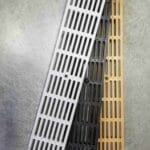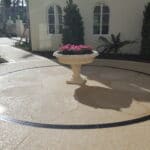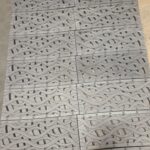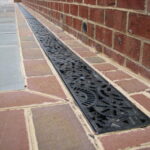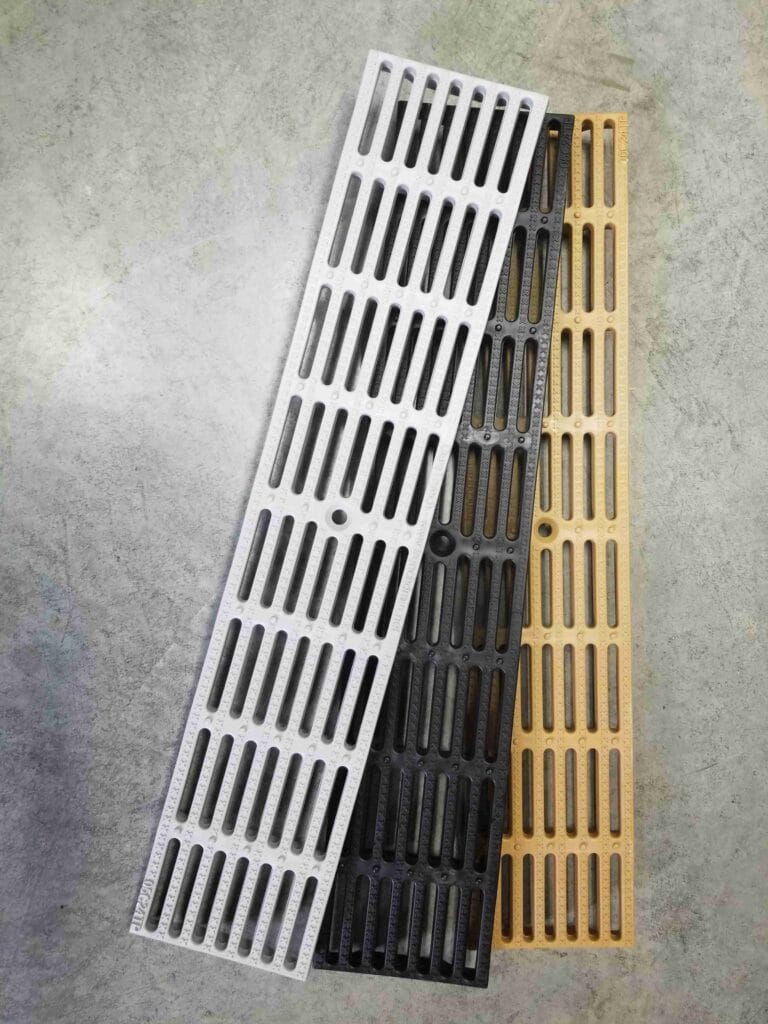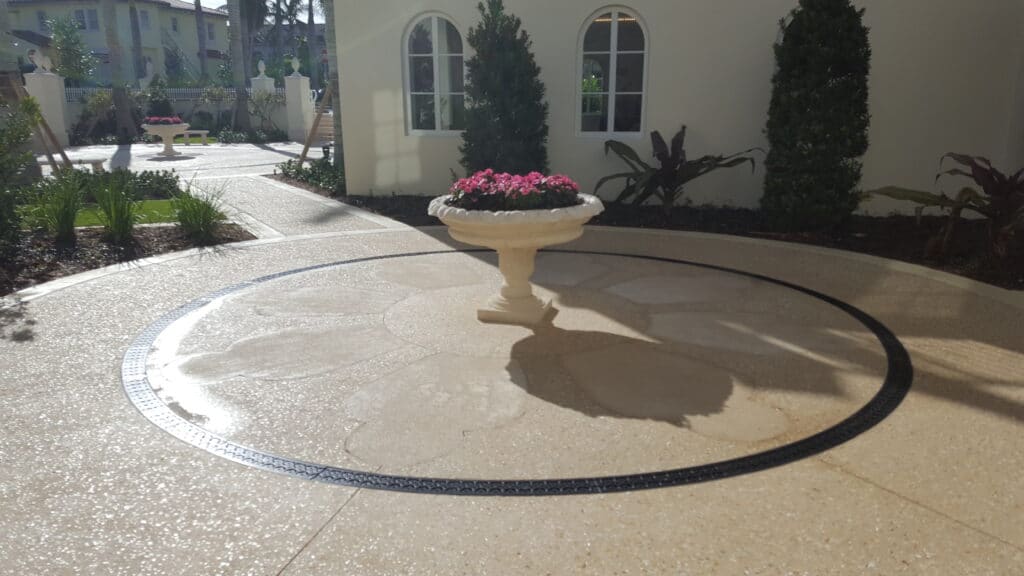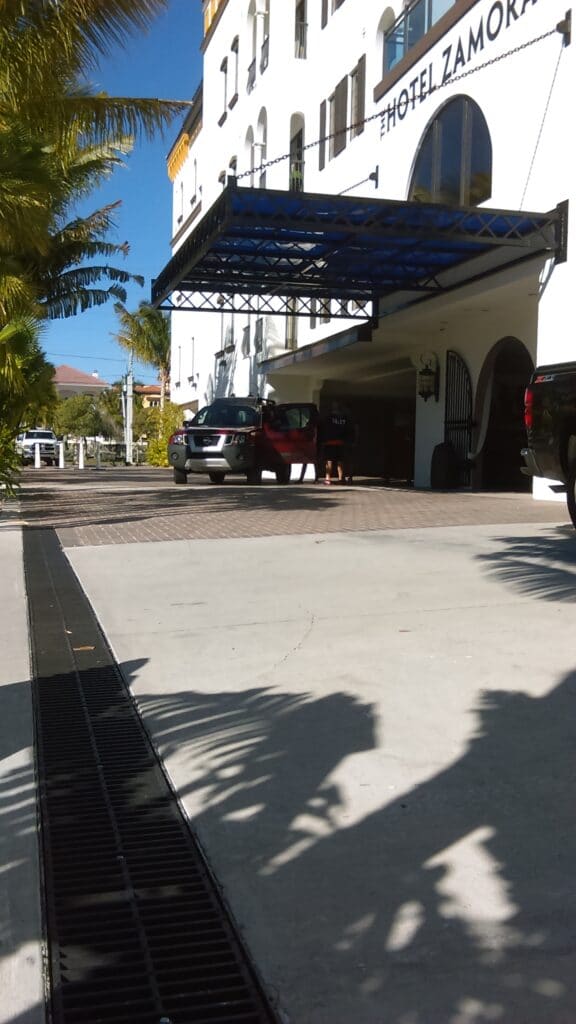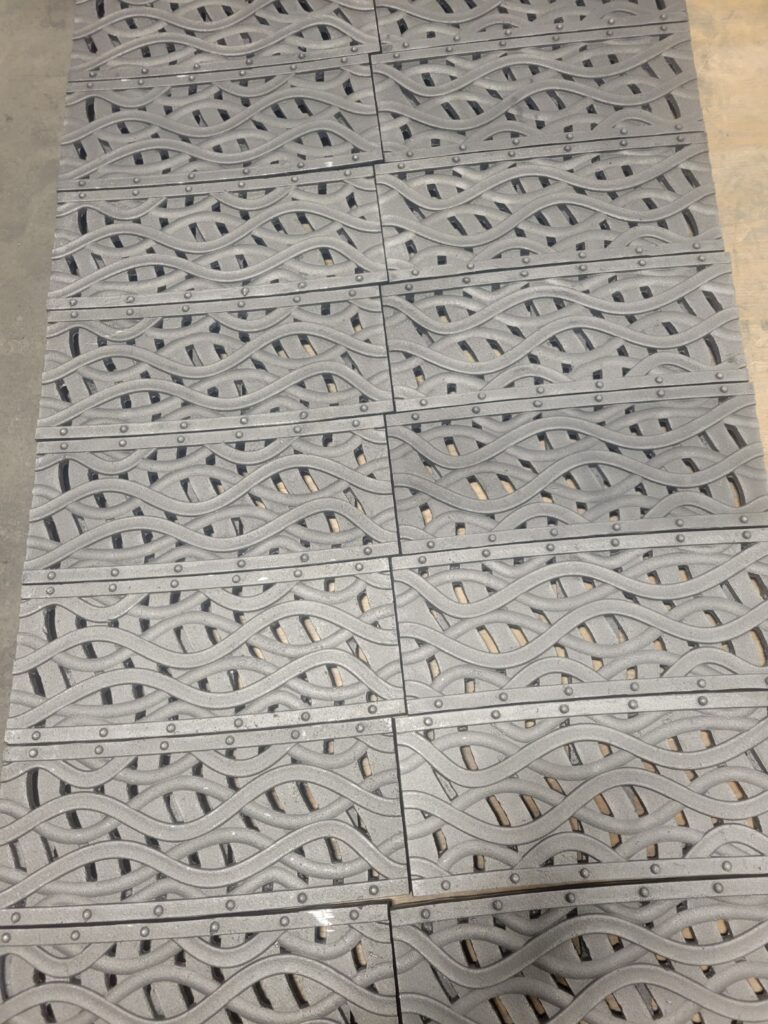Trench drains are one of the most universally useful drain styles that you could ever install at your home or business. These drains can be used in a wide array of applications and are ideal for resolving issues with standing water, runoff, or even groundwater that can be present on a seasonal basis. There is no reason to put up with water on your property when trench drains are so affordable and easy to install.
You might not be sure which kinds of applications are correct for trench drains, or maybe you are not sure if you have the space to install these kinds of drains. Trench drains can come in various sizes, be made of many different materials, and be customized to suit your specific needs with ease. We will discuss here some of the types of trench drain systems that you might want to add to your yard so that you can get a better idea of what these drains can do for you.
1. Channel Drains
These drains are the most ideal for use in areas where you want to prevent water from pooling on surfaces or in spaces like your lawn. These kinds of drains can also be used near inground pools, by fountains or ponds, or in places where a space like your garage is lower than an area that naturally collects water. Keeping water off of impervious surfaces is just as important as keeping it from standing in your actual landscaping.
Channel drains are often installed in paved locations or at the edge of something like a walkway. If you have a pool or a fountain, these drains can be placed in the area where splashing and other kinds of overflow are most common. Channel drains are one of the most cost-effective solutions for this kind of problem, and they do not require a ton of alteration to your yard spaces to add them.
These drains are easy to connect to a catch basin or the local sewer system, and they are very discrete. This means that you will barely see them, and they will not be large enough to cause trouble with catching people’s feet or being in the way of rolling wheeled items across their surface. These kinds of drains can actually be used in industrial settings as well, so you can choose from a variety of materials for your drainage installation.
While it might not be necessary to pick from a really durable drainage solution material for your channel drain installation, there are many ways to be sure that your channel drains will be up to the task of handling caustic runoff along with rainwater and standing water. In breweries, these drains are used to remove standing water from areas that tend to collect acidic water related to the brewing process. At your home, a sturdy metal channel drain will last a very long time and will not require much upkeep.
2. Traditional Trench Drain
This is the most common style of trench drain for use in a yard location. These drains can come in a wide array of sizes and configurations, and they can even be made to be custom-fitted to a specific need. A regular trench drain is an open trench that can collect a lot of water very rapidly when there is a need. The open trench will be covered by a grating which can be made from polymer, metal, or various other materials.
You will be able to install a regular trench drain quite easily in most yard locations. They can be added to spaces like the pool area or installed near a fountain as well. While it might sound like these drains will not be sleek and discrete, you can pick and choose from a wide array of cover styles to make them less obvious. You can even get custom covers that are stamped with designs that make the trench drain look like part of your outdoor landscaping décor.
Trench drains are a great solution if you have a lot of runoff during peak times of the season, and they can be quite large if need be. They are one of the most straightforward trench drain types to install and will not break the bank. Trench drains are also really ideal if you want to be able to control how much water is flowing into your drains and whether or not debris can get into the drain along with the water runoff.
Trench drain gratings and covers can be made in a wide array of orientations that will handle any volume of water runoff. When narrow slots are selected for the cover, heeled shoes will not slip into the grating covers, and less debris can get into the trench below the cover as well. This can be really ideal if you have a lot of tree debris that covers your yard every season or if you are worried about silt and soil being brought down into the drain with runoff from other parts of the yard.
A standard trench drain should not need much maintenance throughout the year. You should be able to clean out the drains twice a year by removing the gratings and sweeping out dirt and residue that has gotten into the drain. In some cases, you will need to clean out your drains more often, but this is not typically required in landscaping settings.
3. French Drain
This is one of the most classic landscaping and yard drainage options that people choose for their property. While this drain is not ideal in all cases, it can be perfect for some locations. A French drain is essentially a trench drain that is not supported by a channel drain system or covered by a grating. The trench drain is dug, and then things like gravel and rock are used to fill in the drain. This provides a natural look but still allows water to flow into the trench and be collected at a location away from the area that was having issues with standing water.
French drains are not ideal for high volumes of water runoff or in situations where there is a lot of debris that comes along with the moisture that you are trying to clean up. However, in spaces where you are trying to maintain a natural appearance for your drainage solution, this kind of drain can be the best possible option for your needs. French drains are very simple to install, but not everyone should do the work for this kind of trench drain on their own. It can be very tempting to just dig a trench where you have seen standing water and fill it in with gravel and rock.
In most cases, the trench drain will need to be placed right where you see standing water, but in other cases, a French drain will need to be placed nearby but not right in the area that has been collecting water. Changing the grade of the area and making sure that the French drain has the right slope are both parts of the installation process when completed by professionals. Many homeowner-created French drains have to be corrected and moved slightly in order to make them work properly. In some cases, an improperly placed French drain can cause an entirely new area where water collects without attending to the original area where there was standing water.
One of the other things that you need to know about this kind of drain is that you need the right kind of rock products to make sure that the drain will work correctly. You cannot just throw in aomw large rock and call it good. There is a structure to these drains, just like there is a system that must be followed to install other kinds of trench drains. Being sure that you have the right textile fabric, gravel, and rock in place for your French drain is key to its usefulness.
4. Radius Trench Drains
These kinds of drains are made to be curved, which makes them ideal for locations that are around pools, fountains, or curved walkways. There are many applications for this kind of drain that we have not mentioned, and you might need to have a curved drain in many different parts of your yard. These drains can be made to match any radius and are, by their nature, semi-custom installations.
This kind of drain will have the same system as a regular trench drain and will require slotted covers or gratings that are curved to match the shape of the drain. The installation is a bit more complex with these drains since excavation needs to be done correctly to match the shape of the drain. However, when you have an area of standing water that fits inside a curve due to a patio, a fence, or some other object that also has a curve, you will want to use a radius drain in these areas.
Radius drains can be a really elegant solution for a wide array of needs. These drains can also be made to work with decorative covers of various kinds and might also be covered with heel-proof slotted covers or wider slotted covers depending on the volume of runoff that your property sees at any given time.
Radius trench drains can also be made from a variety of reinforced or stronger materials to handle caustic or acidic runoff. This can be helpful in places where the runoff water is not completely free from these kinds of naturally-occurring challenges, but you might also utilize chemicals or other kinds of cleaning products in this area of your yard. These kinds of considerations can be discussed with an installation expert who will be able to help you create the right plan for your radius trench drain installation from start to finish.
5. Utility Trench
Not every kind of trench drain is made to handle water runoff. In some cases, trench drains are made to provide a safe space for utilities and other kinds of cabling to pass under roadways or through landscaped areas. These trenches keep the utility connections and cabling dry and safe from being crushed under the weight of vehicles.
Utility trenches can also be built to be sloped, which allows water to run out of the bottom of the trench. There are lots of grating options for this kind of trench drain as well, so you will not need to worry about the trench being visible in ways that you do not want it to be. This is a heavy-duty kind of trench drain, but that does not mean that it is not a trench drain that requires a lot of excavation to install. The same process for installation is used to install a regular trench drain, so you will not need to plan for your yard to be torn up extensively to install this kind of drainage solution.
Just like with any other trench drain, this drain should be inspected and cared for at least once a year. This is the kind of drain that you will want to have an expert team look at every year. Being sure that all of the various kinds of utility needs of your home or business are being met is easy when you choose this kind of trench drain for your standing water or runoff problems.
Additional Items to Add to Your Drainage System
There are some other items that you might need to add to your trench drain installation. You might need catch basins to collect water before it is delivered to the sewer system. This is more common in industrial settings, but in some counties and cities, it might be a requirement for certain areas that have runoff that might alter the pH of the runoff that the municipality is protecting or treating for various purposes. These additions can be made from various kinds of materials and
At some properties, you can connect your trench drain system right to the sewer system, but you will usually need special fittings and connections that make the drainage system work correctly. These are often readily provided by the maker of your trench drain system, but in some cases, you might need to order custom connectors. Custom solutions are more typical when it comes to older drainage systems that are being joined to newer sewer outlets or if there is a catch basin or some other kind of collection point that then needs to empty into the main sewage outlet.
In situations where your drainage might be exposed to the weight of vehicles and other kinds of load-bearing challenges, you might need to select from different kinds of frames for your drainage solution. These drains can be made with fiberglass frames or with things like galvanized steel frames to ensure that nothing happens to your trench when a vehicle rolls over it. Knowing what kind of support the drain will need can require working with an installation expert. That is one of the benefits of having a skilled team handle your trench drain installation for you.
What Materials Can These Types of Drainage Systems Be Made of?
There are usually many options for the materials that your drainage system can be made of. You will typically be able to choose from aluminum, fiberglass, structural steel, stainless steel, galvanized steel, or extruded rigid thermoplastic. Each of these kinds of materials are suitable for different environments, and choosing the right type of materials can be easy once you know more about the conditions that your trench drain will be exposed to. A skilled installer can also help you determine which of these materials is the right option for your unique needs.
There are various considerations that can impact the determination of which kind of trench drain material to use. Take the guesswork out by working with a skilled installer for your trench drain installation.
Trench Drains Can be an Ideal Solution in Yards and Landscaped Spaces
If you are tired of looking at standing water in your yard or you are worried about water pooling against the foundation of your home, you need to consider installing a trench drain to handle this water problem. These are affordable and sturdy drains that come in various styles and designs. You can resolve your standing water problem with ease just by adding the right drainage, and a trench drain is often the most effective means of taking care of this problem.
If you are not sure what kind of trench drain is the right fit for your water issues, you will need to consider working with a skilled installation team. Experts can help you to plan your trench drain system, place it correctly, and choose the right materials for your location and unique situation. There are lots of ways to make discrete and effective trench drain systems for your yard. Dealing with standing water can be easy if you have the right trench drain solutions in place!



